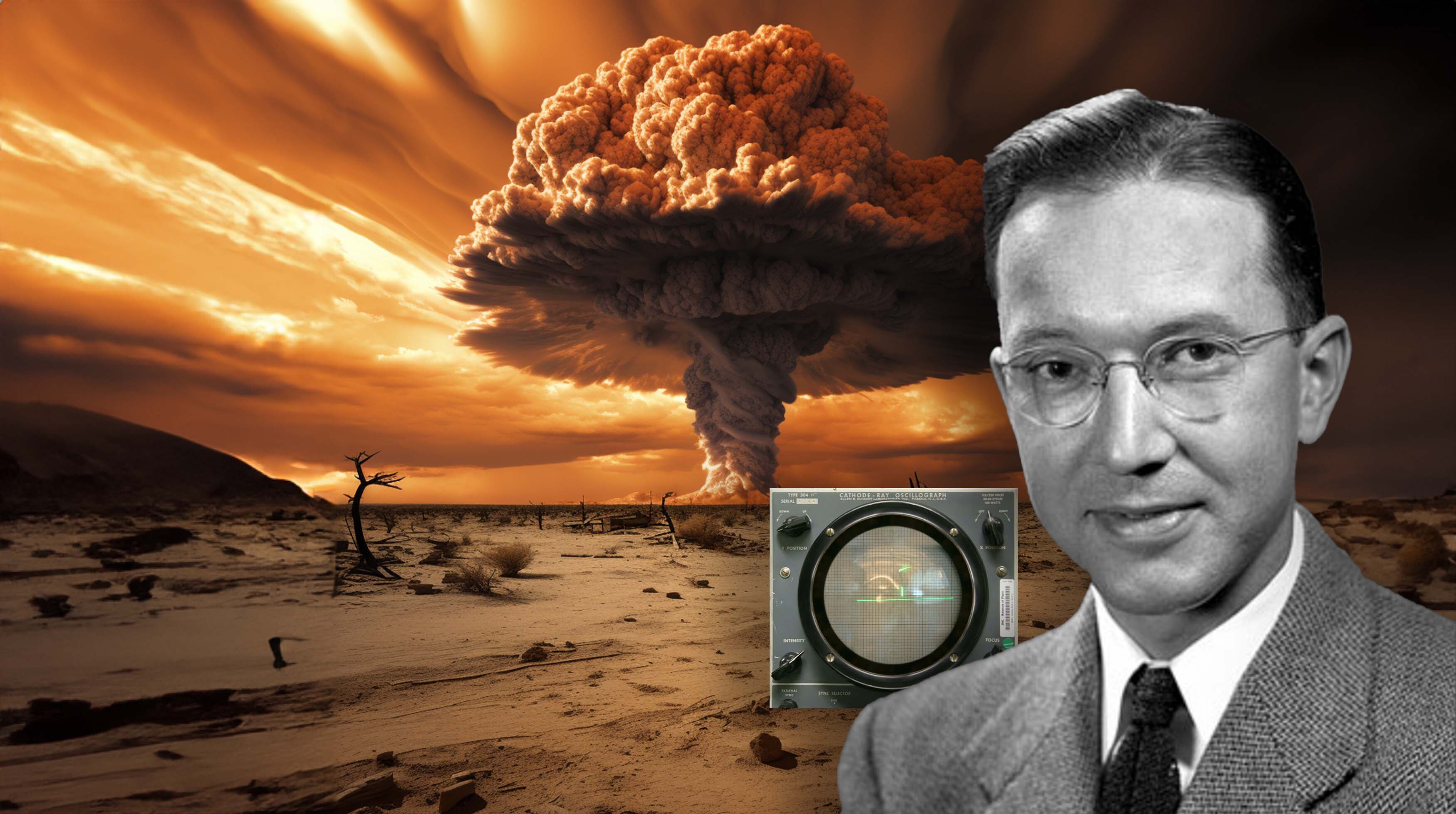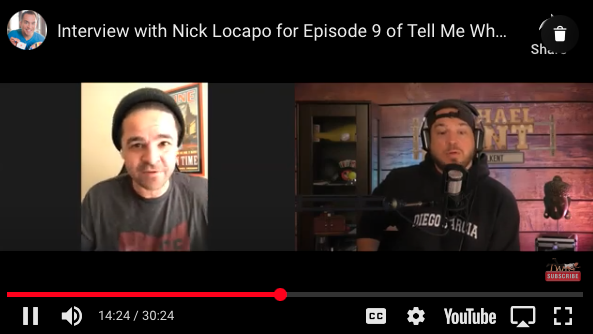Willy Higinbotham: A Name You Should Know, But Don’t – REWIND
First released November 2, 2020. Willy Higinbotham is considered by many to be the inventor of the world’s first video game. But there’s more – he was also on the team that helped create the world’s first nuclear bomb! In this episode we explore Willy’s game, “Tennis for Two” and chat with former video game developer and professional magician, Nick Locapo.

William Alfred Higgenbotham was born in Bridgeport, Connecticut in 1910. He got an undergraduate degree in Williamstown, Massachusetts at Williams College in 1932, then continued his education at Cornell in New York. Later, in 1941, he worked with MIT scientists to develop a radar system.
It’s here that we’re going to skip forward in time a bit. Don’t worry, we’ll get back to these lost years later in the episode. But in 1958, Higgenbotham, who was known as “Willy,” was the Head of the Instrumentation division at the Brookhaven Institute. Brookhaven would hold an open house for visitors every year in the fall. And, being a science lab, most of their work was dealing with flowcharts, endless stacks of paper and the occasional photograph. Higgenbotham wanted to capture the imagination and the attention of visitors to the lab. He wanted people to realize that the science they were doing at Brookhaven had a real relevance to society. That’s when he remembered something he had read in the manual for their new Donner Model 30 computer. The computer was capable of calculating ballistic missile trajectories and displaying that information on an oscilloscope, an off-white box with a few knobs and a tiny, round 5” screen for displaying graphical values. Willy Higgenbotham had an idea.
What if that screen could be used to interact in real time with input controls and be used for amusement rather than just displaying test data?
What he came up with was a game with two controllers that would input live data. It took him, along with fellow engineers David Potter and Robert Dvorak Sr. 4 hours to design and 2 weeks to build the project. The controller was a giant silver box. On top of the box were two controls – on the left, a big black dial and on the right, a black momentary contact push button. The circuitry of the game involved resisters, capacitors and relays, with transistors aiding in the fast switching of the graphics. And these controlled a bright white ball with a trail on the screen that could be played back and forth over a line symbolizing a tennis net. There was no score. There was no obvious start or stop of a game. But people loved it. It soon became so popular, people were lining up outside the Brookhaven lab just to play his game, which he called “Tennis for Two.”
People loved it so much, Higganbotham brought it back the following year with improvements to allow players to change the gravity effect on the ball, simulating playing tennis on Mars or Jupiter.
While many consider this the world’s first video game, I should mention that there are competing claims from others. There’s a cathode ray tube device from 1947, a light-bulb based game called Bertie the Brain and a tic-tac-toe type game by A.S. Douglas called “O.X.O.” It all depends on how you define “video game.” I would say that Tennis for Two bears the closest resemblance to what followed in the 70s – Pong – which as we know, launched the idea of console gaming and created an industry.
What’s more interesting about Willy Higginbotham’s story, however is that prior to his pioneering video games, he helped pioneer something much more powerful.
So we skipped over what Higgenbotham spent most of his career on. Hint – it wasn’t a video game. That was simply a distraction – a way of getting people excited about the lab. His real life revolved around the development of nuclear weapons.
In the later years of World War II, he worked at Los Alamos National Laboratory in New Mexico and his team was instrumental (pardon the pun) for developing the electronics that made the first atomic bomb possible. It would come to be known as “The Manhattan Project.” They created the complex ignition mechanism and developed tools to measure the testing of the bomb. The entire time, Higgenbotham was conflicted about being involved with something capable of so much destruction. He determined that it was okay for him, because he, quote, “was anxious to make sure that what he did would contribute to ending the war.”
On the 16th of July in 1945, Willy Higinbotham and several other scientists witnessed a test detonation of the first atomic bomb. The radio communications to allow the team to monitor the test were created by Higinbotham. Less a month later, the first atomic bomb was dropped over Hiroshima.
His reluctance to be a part of the destructive power of nuclear weapons continued after the war. He had lost two brothers in the war and didn’t want to see more nuclear bombs causing death and destruction. He personally helped found the nuclear nonproliferation group Federation of American Scientists and was its first Chairman. Their activities included lobbying Washington, testifying at official government hearings and presenting lectures about the dangers of a Nuclear arms race.
These efforts had an important effect on slowing the spread of Nuclear weapons. They helped pass the May-Johnson Bill, the McMahon Atomic Energy Act and helped establish the US Atomic Energy Commission.
So now we’ve learned something new Willy Higinbotham, a mild-mannered engineer from Connecticut held over 20 patents. He helped create something that he later feared. And unwittingly helped create a a video game industry that is worth over 100 billion dollars today.

Bonus episodes and content available at http://Patreon.com/MichaelKent
Review this podcast at https://podcasts.apple.com/us/podcast/the-internet-says-it-s-true/id1530853589
For special discounts and links to our sponsors, visit http://theinternetsaysitstrue.com/deals

